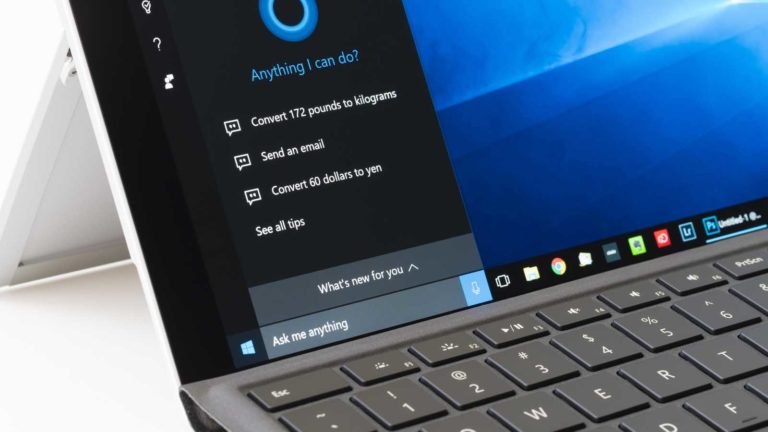Satya Nadella opened the Microsoft (NASDAQ:MSFT) event on Thursday, remarking on a convergence that has been a long time coming, “a symbiotic relationship between humans and computing.” The CEO was opening up one of Microsoft’s biggest events and presenting one of its biggest business gambles of the year — artificial intelligence (AI). The Microsoft Copilot event is one of the most robust peeks into Big Tech’s vision for an AI-driven future and how the technology will be harnessed to make work easier.
Nadella and Microsoft are conscious of a massive wave of tech innovation that is only just beginning to crest. AI has been a buzzword for decades, heralded by many as the technology of the future and by others as a dangerous tool. But in the last year, AI is becoming much more real than ever, thanks to companies like OpenAI putting the tech directly in the hands of the consumer.
Already, Microsoft has been putting its finger on the pulse of AI. It has been pumping billions of dollars in funding into OpenAI for over half a decade, and it’s building a supercomputer to help the company train its models. This week, the company continues to build open its relationship with AI. First, it announced upgrades to its Bing AI model, including integrating OpenAI’s GPT-4 upgrade. But now, the Thursday morning event breaks the company’s AI exposure wide open.
Microsoft Copilot Event Brings People Closer to AI
Thursday morning, the company hosted its presentation “Reinventing Productivity: the Future of Work With AI.” Nadella and Vice President of Modern Work & Business Applications Jared Spataro headed the presentation. In it, the company notes a disconnect occurring in the working world between people and their work. Spataro concludes that this disconnect comes because “we spend too much time consumed by the drudgery of our work.” The big Microsoft Copilot unveiling is the company’s shot at eliminating this drudgery.
Copilot is Microsoft’s attempt to augment its existing Office application suite with AI technology to make it easier to use. The Copilot tool will be integrated across apps like Microsoft Office, PowerPoint, Excel and Outlook. Just as with tools like ChatGPT, users can feed Microsoft Copilot different prompts, which it can use to accomplish any number of tasks.
As Microsoft demonstrates in its unveiling, the Copilot tool can write scripts, answer emails and create presentations. It can even create meeting agendas and take notes for you in meetings you can’t attend. And it does all of this using each user’s working habits and styles. Copilot essentially acts as a bridge between Microsoft apps, the large language AI model itself, and each user’s files, contacts and other information. User data informs the Copilot tool to create things, and it automatically translates the prompts into its work.
The company admits it won’t get things perfect every time. Nonetheless, Copilot does have apparent applications in eliminating dreaded “busy work.” It can do all the grunt work of making PowerPoints, writing notes, combing spreadsheets to find the needed data, and more. It can do this while being able to scan the web for helpful information you might not have.
Is AI in the Workplace Upon Us?
The desired outcome for Microsoft is obvious enough. As the company points out in the presentation, the average user takes advantage of only about 10% of the full power of the Office suite. Microsoft Copilot will be the company’s attempt to get users to utilize the full scope of what this suite of applications can do. But, beyond Microsoft alone, the presentation suggests the future trajectory for AI and Big Tech.
Nadella is likely, not wrong. Since the idea of artificial intelligence was minted, humans have been on a course toward a future symbiotic with machines. Already, AI has been influential in the everyday world, from algorithmic music recommendations to finding the fastest routes for travel to your everyday home smart devices. Work is just the next step in this natural progression.
And, there are a lot of annoyances in everyday work that people would gladly do without. There are conflicting schedules, tedious documents to fill out, and avalanches of emails. To better streamline work and remove many of the worst aspects of office life has been an obvious goal of this technology. Microsoft is preparing to address all of these concerns. Others, from Meta Platforms (NASDAQ:META) to Alphabet (NASDAQ:GOOG, NASDAQ:GOOGL), are falling in lock-step with this vision, too.
Thus, an AI-driven work life could be upon us faster than you think.
On the date of publication, Brenden Rearick did not hold (either directly or indirectly) any positions in the securities mentioned in this article. The opinions expressed in this article are those of the writer, subject to the InvestorPlace.com Publishing Guidelines.

